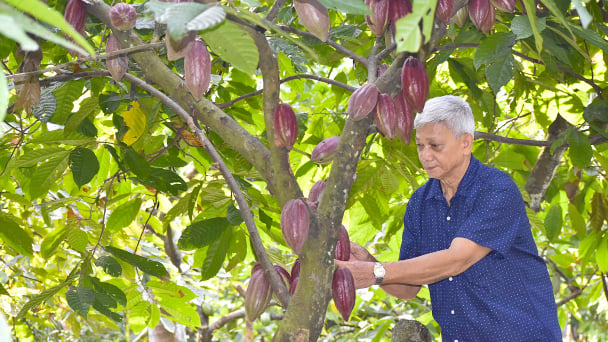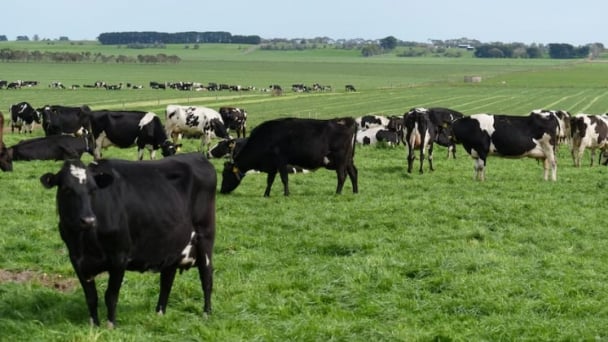April 15, 2025 | 13:10 GMT +7
April 15, 2025 | 13:10 GMT +7
Hotline: 0913.378.918
April 15, 2025 | 13:10 GMT +7
Hotline: 0913.378.918
Soybean production in China for marketing year 2024-25 is forecast 19.9 million tonnes based on higher yield and a planted area of 9.95 million hectares, a prelude to projected imports of 104 million tonnes, according to a report from the Foreign Agricultural Service (FAS) of the US Department of Agriculture.
If realized, production would be up slightly from a projected 19.7 million tonnes 2023-24. Expectations for imports, while down a bit from 104.8 million tonnes in 2023-24, were raised from 103 million tonnes in the previous FAS report. Beginning stocks for 2024-25 are forecast to reach 36.4 million tonnes, up from 31.8 million the previous year.
Low soybean prices and profits due to an oversupply of soybeans for both food use and crushing in marketing year 2023-24 led to a moderate planted area decline in 2024-25, despite the China’s continued efforts in subsidizing soybean planting, the FAS said in its Nov. 6 update.
“Industry sources indicated that demand growth for domestically produced soybeans for food is weak while domestic soybeans are not competitive with imported soybeans in the crushing market,” the FAS said.
Total oilseeds for crushing in 2024-25 are forecast by the FAS at 137.3 million tonnes, up from the 2023-24 estimate of 135.3 million tonnes, reflecting a moderate demand recovery for protein meals in the feed sector driving higher crushing consumption.
Despite low to negative margins for swine and poultry sectors in the first months of 2023-24, overall feed consumption continues to grow driving soybean meal use. The continuous consolidation and integration in the livestock sector will boost the use of compound feed, driving soybean meal consumption in 2024-25. Additionally, a moderate recovery of vegetable oil demand and greater soybean use for food also drive-up consumption of oilseeds.
The forecast for 2024-25 soybean crushing remains at 99 million tonnes, up from an unchanged estimate of 97.5 million tonnes for 2023-24, reflecting a growth in demand for soybean products.
Demand for protein meals – particularly soybean meal – continues to be the major force driving oilseed consumption. The FAS is keeping its forecast for total meal consumption for feed in 2024-25 at 102.7 million tonnes, moderately higher than the estimate of 101.3 million tonnes year on year.
“The increase of total meal use for feed mostly reflects steady growth of soybean meal use and more use of imported rapeseed meal in both years,” the FAS said. “Soybean meal continues to dominate meal use for feed, accounting for over 74%, distantly followed by rapeseed meal at 13.1% in 2024-25.”
The relatively stable imports for 2024-25 are based on a slight increase in crushing demand from a modest increase in soybean meal consumption as lower prices incentivize feed mills to choose reasonable inclusion rates, the FAS said. Additionally, China builds its stocks when the global soybean supply is satisfactory and prices are attractive.
China has sufficient storage capacity to maintain grain and oilseeds stocks to meet its grain security targets, according to the FAS. The National Food and Strategic Reserve Administration (NFSRA) reported that China’s national standard grain storage capacity exceeded 700 million tonnes at the end of 2023, an increase of 36% from 2014.
Brazil is China’s top supplier of soybeans at an estimated 77.3 million tonnes in 2023-24, a 74% of market share. The United States is a distant second, shipping 21 million tonnes for 21% of the market. US soybean exports to China will continue to face fierce competition from a forecast higher production in Brazil and Argentina, the FAS noted.
“During this period, the average import price from Brazil remained $67 per tonne or 12% below the average price from the United States,” the FAS said. “Industry sources did report an increase of orders for soybeans from the United States in the first quarter of 2024-25 over concerns on the uncertainty of the US-China relationship on bilateral trade.”
(WG)

(VAN) The Philippines is making efforts to diversify its rice import sources in order to reduce its dependence on Vietnamese rice. However, Vietnamese rice has managed to maintain its strong position in this market.

(VAN) In the Mekong Delta, cocoa has provided stable economic returns for many years. Recently, a surge in cocoa prices has created a strong incentive for farmers to expand their cultivation areas.

(VAN) Product quality, branding strategy, and technology innovation are key factors for Vietnamese bird’s nest to establish its foothold on the global map.

(VAN) KOCHAM Deputy President expects that Vietnam would accelerate innovation and development of bird’s nest-based products as a representation of Vietnamese culture.

(VAN) Imported dairy products are weakening the local industry, according to dairy farmers and processors.

(VAN) April 10 marked a significant milestone for Vietnam's agricultural exports as Vietnamese pomelos officially became available at the Lotte Mart supermarket chain in South Korea.

(VAN) Vietnam is focusing on developing the legal framework and technical infrastructure for the carbon market, with committed support from global financial institutions.